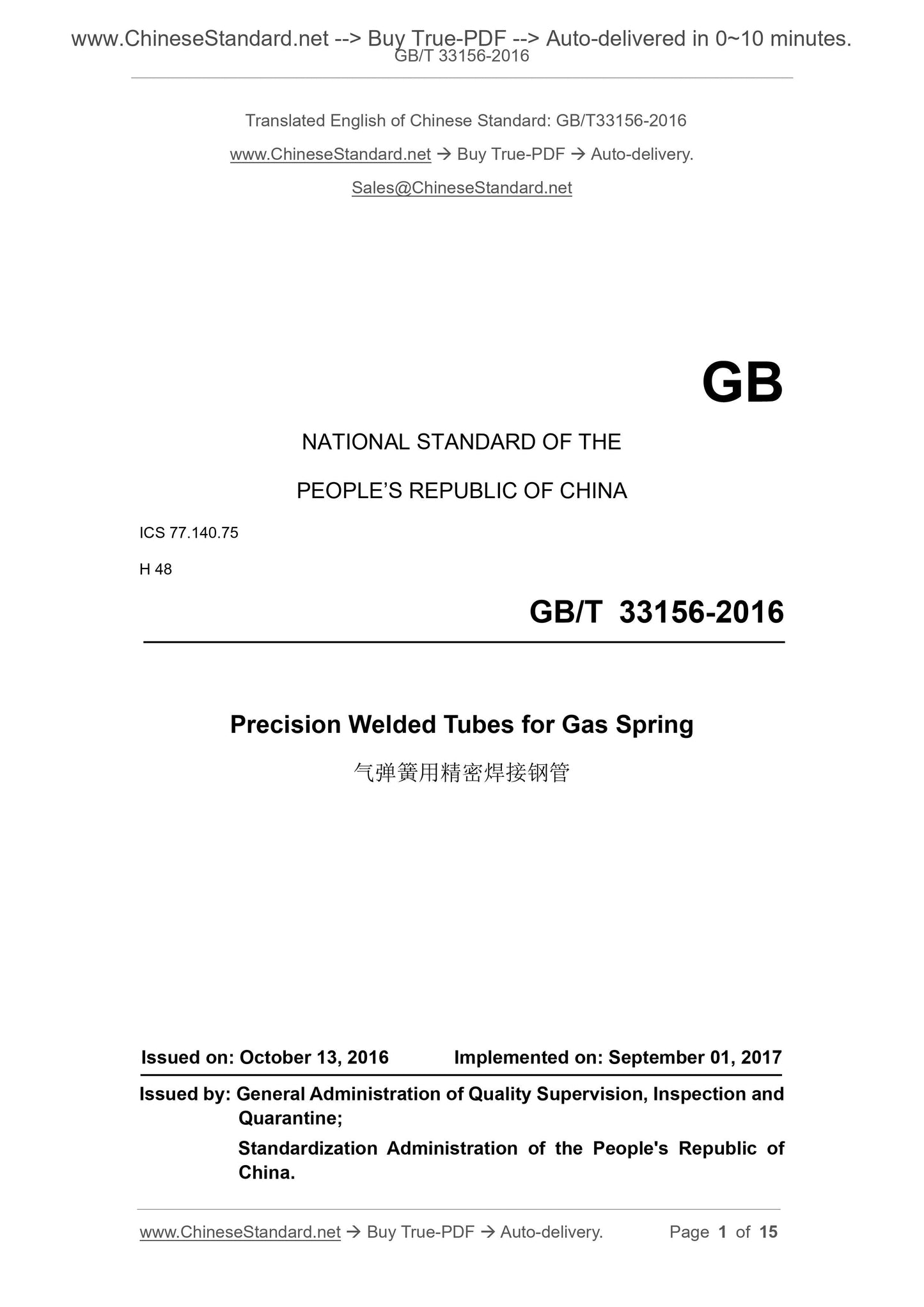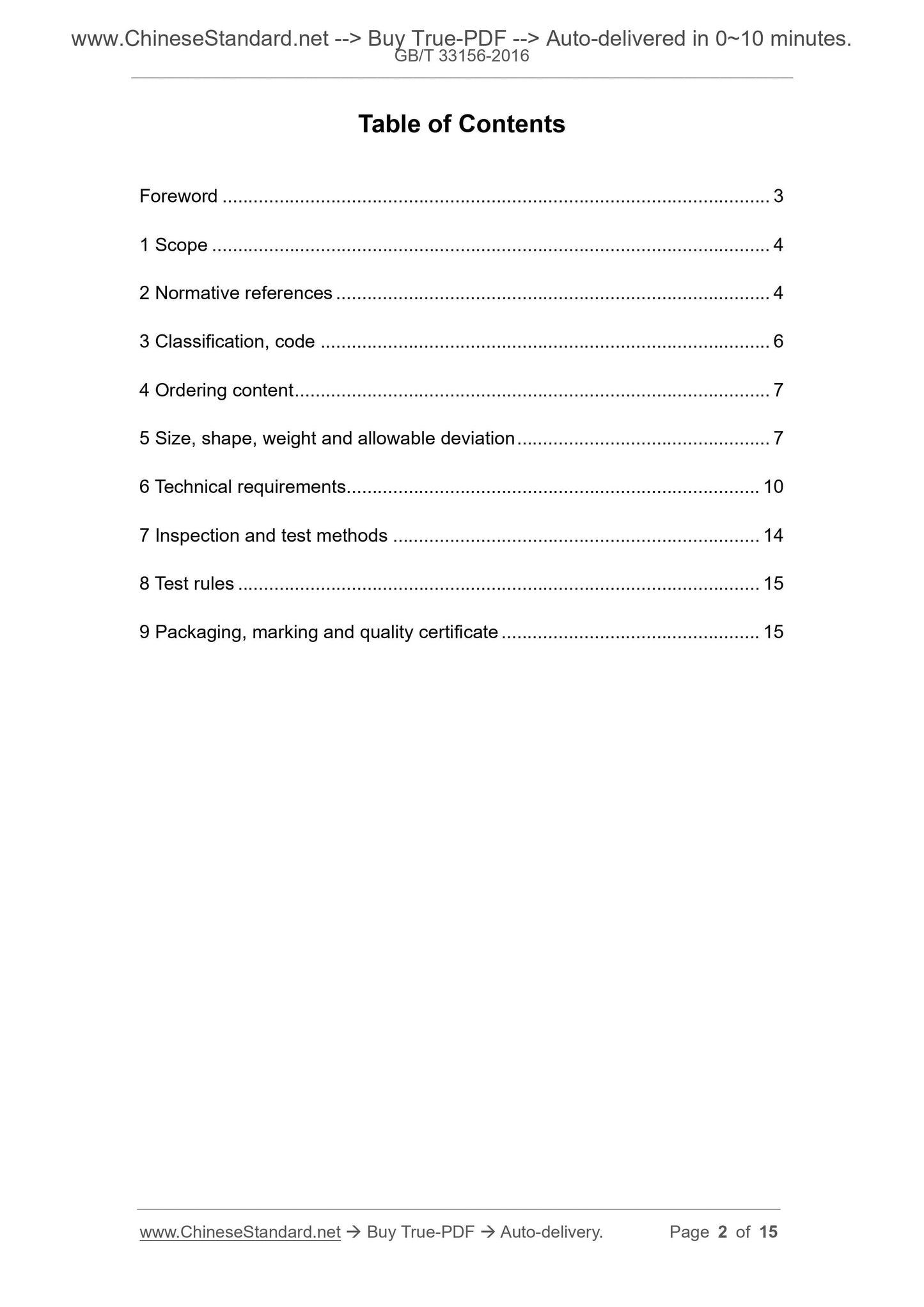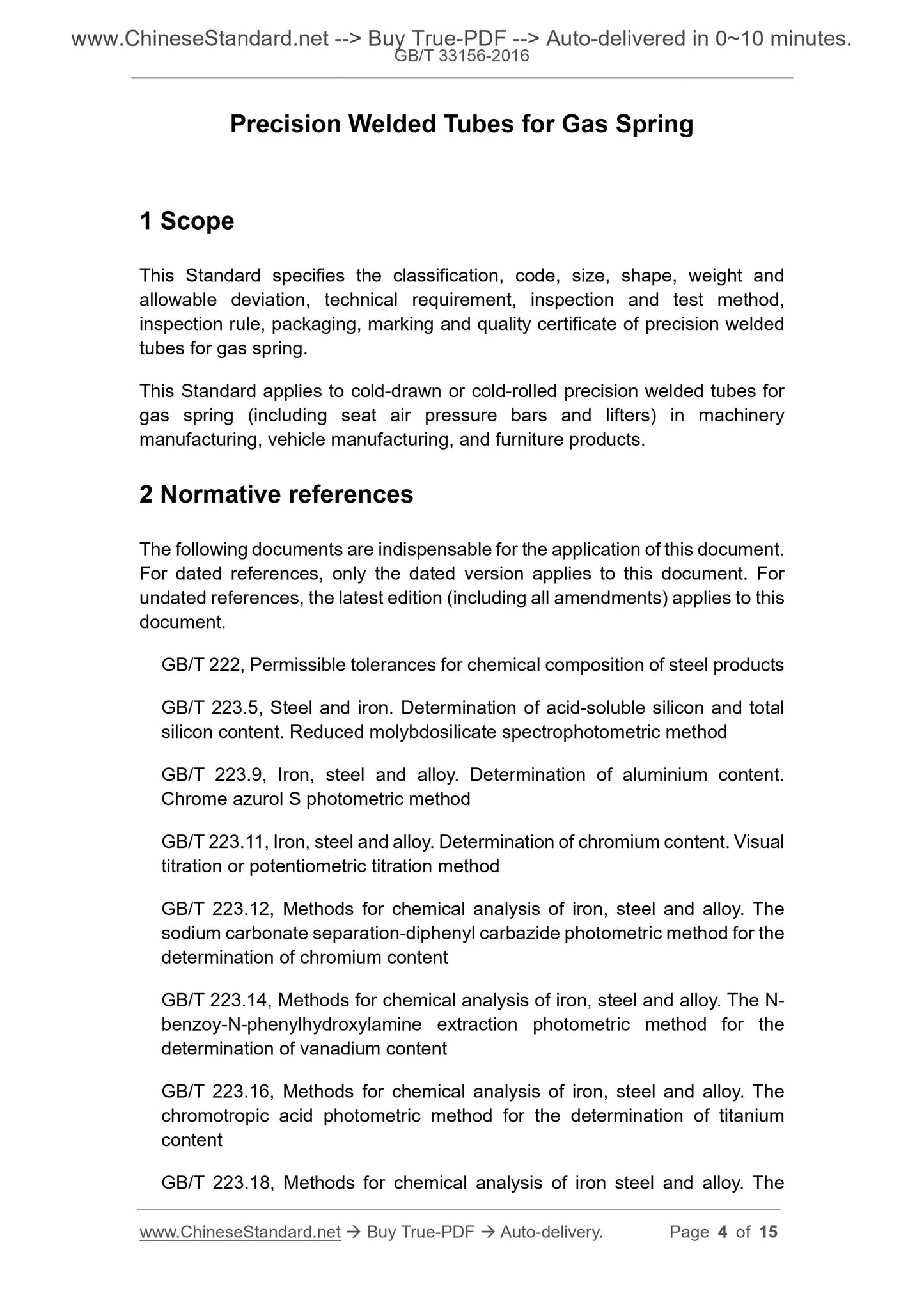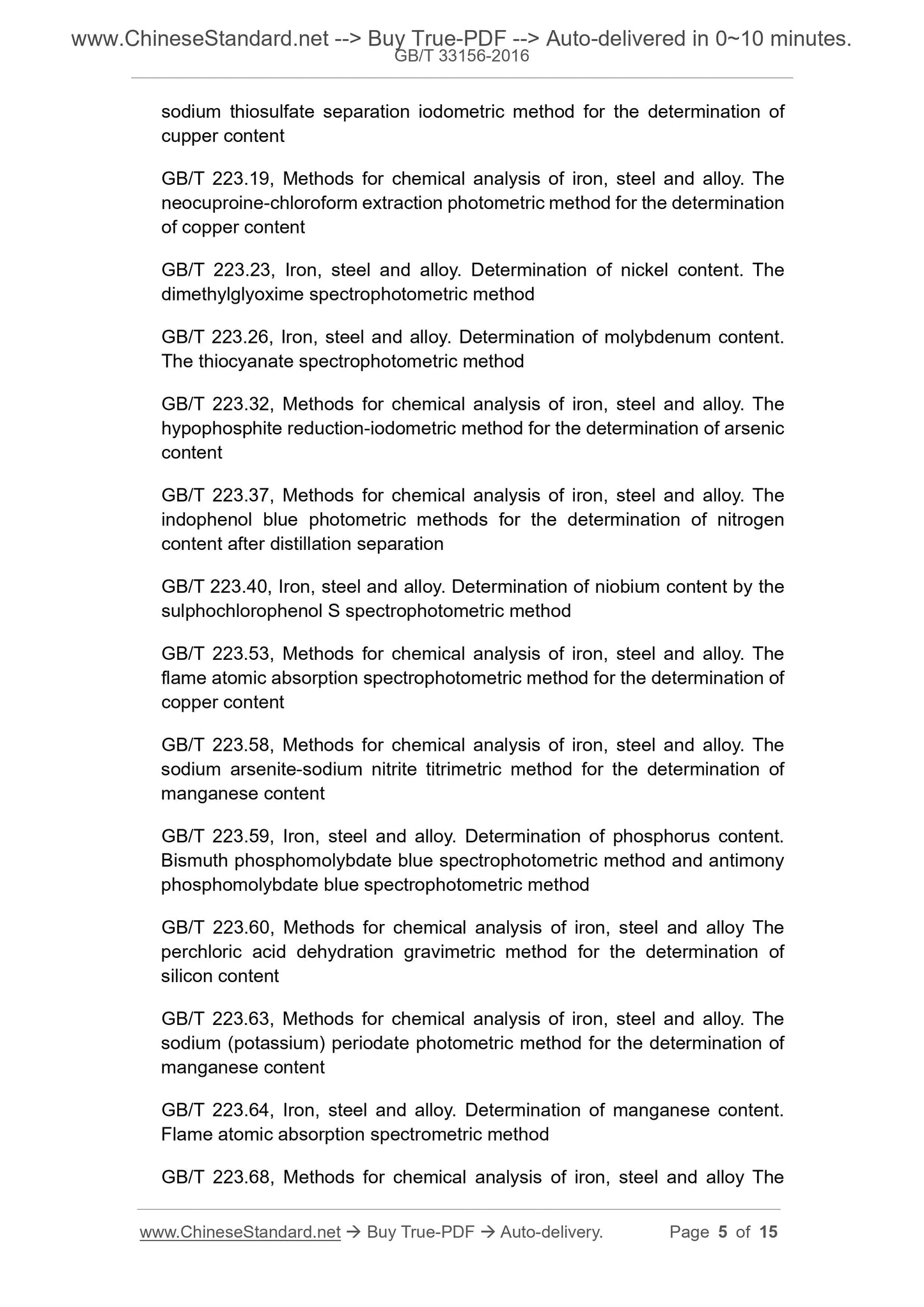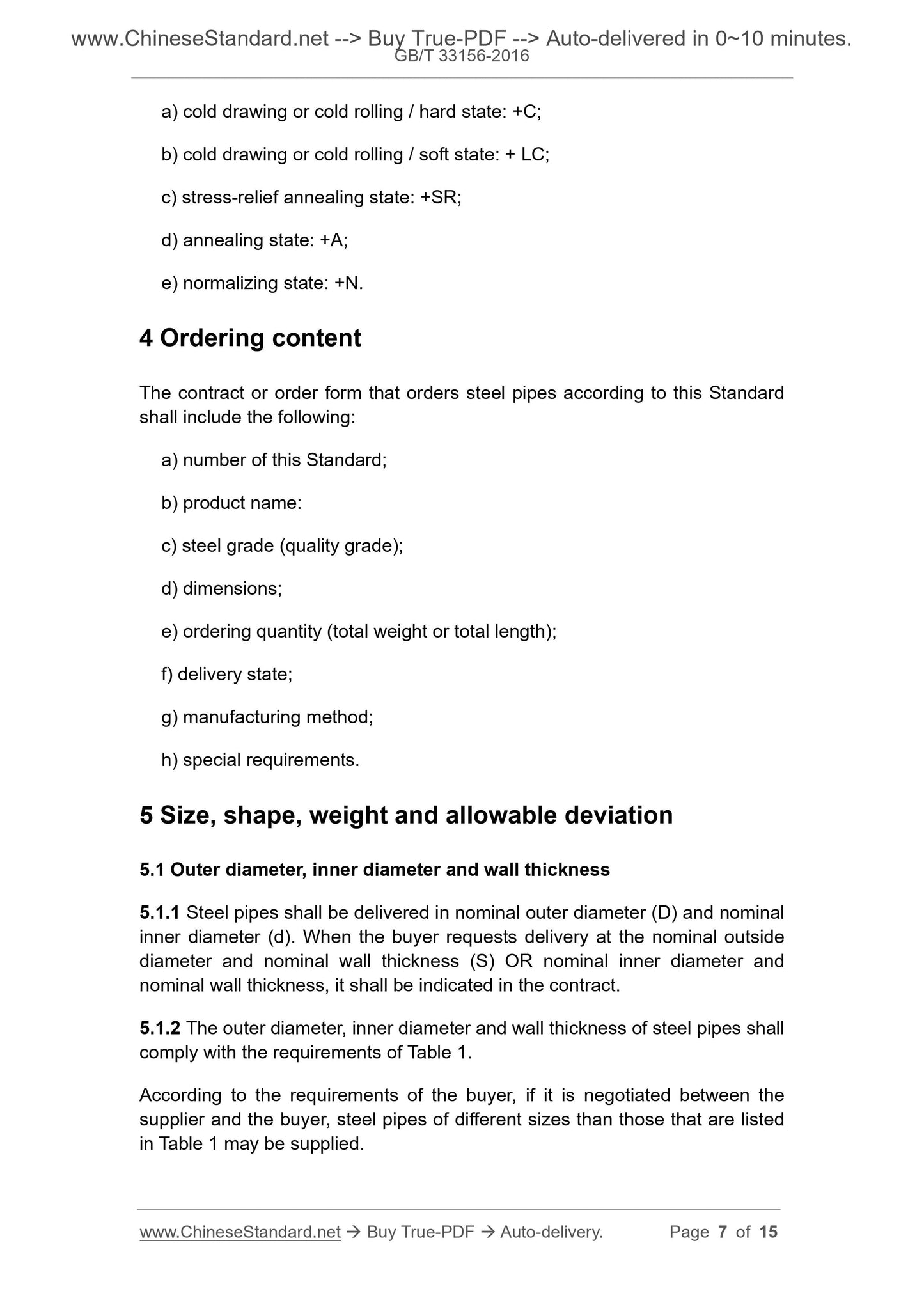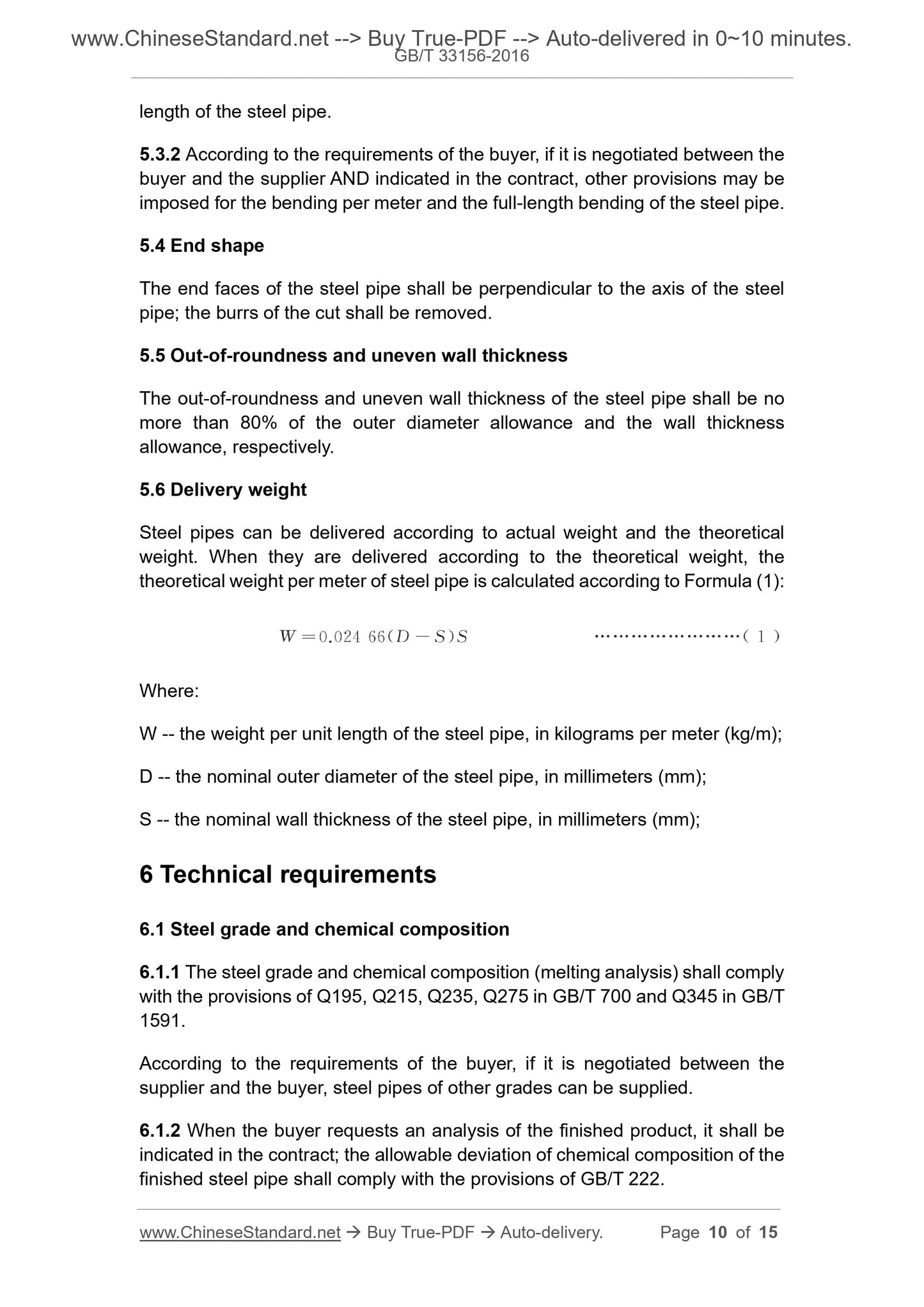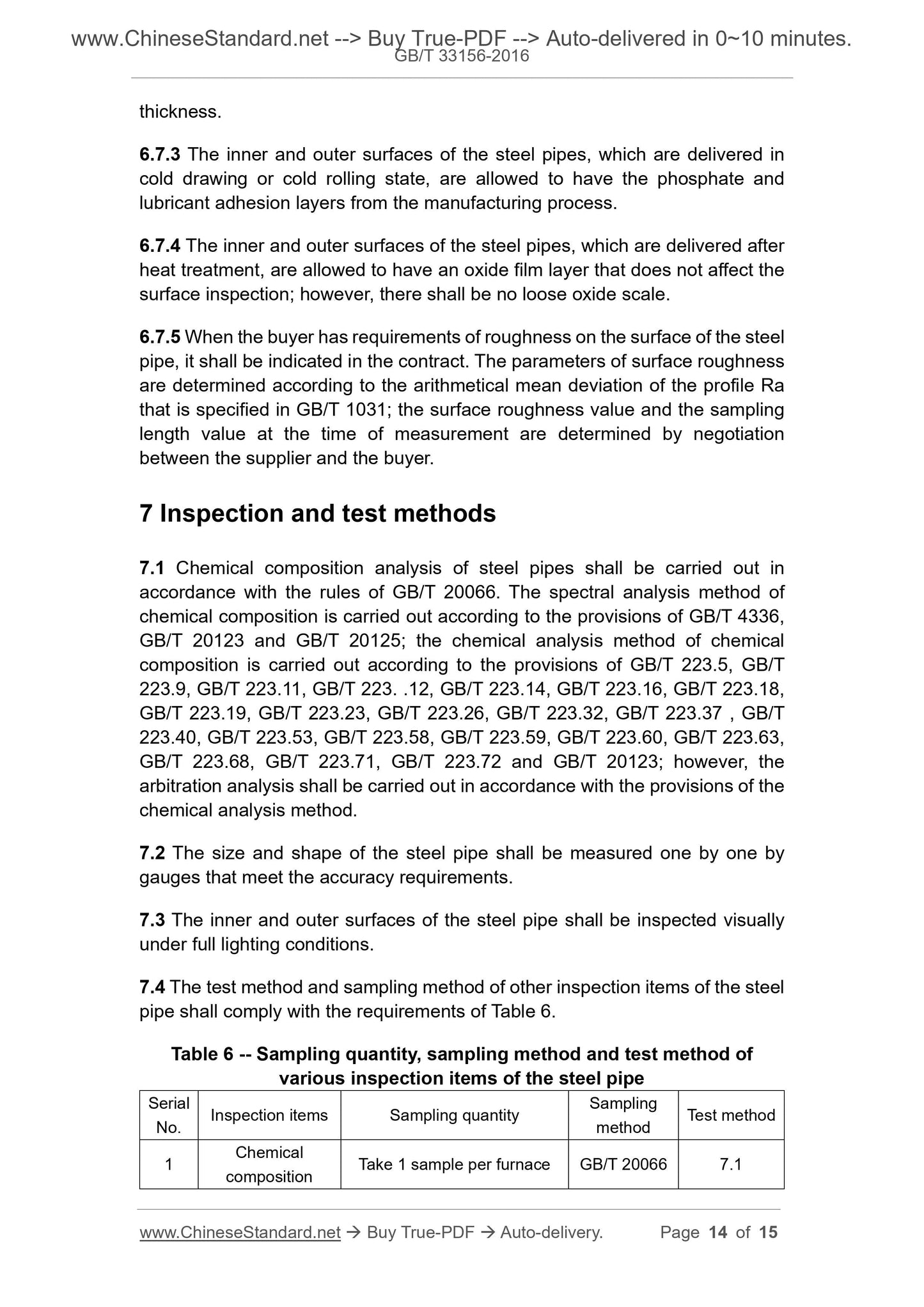1
/
of
7
www.ChineseStandard.us -- Field Test Asia Pte. Ltd.
GB/T 33156-2016 English PDF (GB/T33156-2016)
GB/T 33156-2016 English PDF (GB/T33156-2016)
Regular price
$150.00
Regular price
Sale price
$150.00
Unit price
/
per
Shipping calculated at checkout.
Couldn't load pickup availability
GB/T 33156-2016: Precision Welded Tubes for Gas Spring
Delivery: 9 seconds. Download (and Email) true-PDF + Invoice.Get Quotation: Click GB/T 33156-2016 (Self-service in 1-minute)
Newer / historical versions: GB/T 33156-2016
Preview True-PDF
Scope
This Standard specifies the classification, code, size, shape, weight andallowable deviation, technical requirement, inspection and test method,
inspection rule, packaging, marking and quality certificate of precision welded
tubes for gas spring.
This Standard applies to cold-drawn or cold-rolled precision welded tubes for
gas spring (including seat air pressure bars and lifters) in machinery
manufacturing, vehicle manufacturing, and furniture products.
Basic Data
| Standard ID | GB/T 33156-2016 (GB/T33156-2016) |
| Description (Translated English) | Precision Welded Tubes for Gas Spring |
| Sector / Industry | National Standard (Recommended) |
| Classification of Chinese Standard | H48 |
| Classification of International Standard | 77.140.75 |
| Word Count Estimation | 10,128 |
| Date of Issue | 2016-10-13 |
| Date of Implementation | 2017-09-01 |
| Regulation (derived from) | National Standard Notice No.1716 of 2016 |
| Issuing agency(ies) | General Administration of Quality Supervision, Inspection and Quarantine of the People's Republic of China, Standardization Administration of the People's Republic of China |
Share
